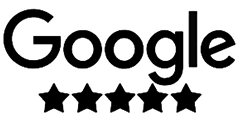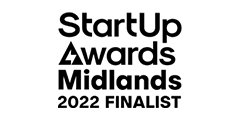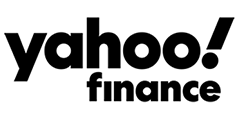
February 12, 2024
Category
Digital Agency
In the realm of Digital Marketing, understanding the jargon is key to navigating the landscape effectively. Acronyms play a crucial role in this, condensing complex terms and concepts into shorter, more manageable forms. Here are a list of the must-know Digital Marketing acronyms that every marketer should be familiar with.
Acronyms, or abbreviations formed from the initial components in a phrase or a word, are ubiquitous in the Digital Marketing sphere. They serve as shorthand for various terms, processes, and metrics, facilitating communication and streamlining discussions within the industry.
Digital Marketing encompasses a broad array of strategies and techniques aimed at promoting products or services through digital channels such as search engines, social media, email, and websites. In this fast-paced and dynamic field, staying abreast of the latest trends and terminology is essential for success.
SEO - Search Engine Optimisation
Search Engine Optimisation (SEO) is the practice of enhancing the quantity and quality of traffic to a website through organic search engine results. It involves optimising various elements on a website to improve its visibility and ranking on search engine results pages (SERPs). Common SEO acronyms include:
- SERP (Search Engine Results Page)
- CTR (Click Through Rate)
- ROI (Return on Investment)
SEM - Search Engine Marketing
Search Engine Marketing (SEM) is a broader term that encompasses activities aimed at promoting websites by increasing their visibility in search engine results pages through paid advertising. While SEO focuses on organic tactics, SEM includes both organic and paid strategies. Key SEM acronyms include:
- PPC (Pay Per Click)
- CPC (Cost Per Click)
- CPM (Cost Per Thousand Impressions)
BL - Backlink
A backlink (BL) is a hyperlink that directs users from one website to another. It serves as a vote of confidence or endorsement from one site to another, indicating to search engines that the linked-to site is reputable and credible. Backlinks are crucial for search engine optimisation (SEO) as they signal to search engines the popularity, relevance, and authority of a website. The more high-quality backlinks a site has from reputable sources, the higher its chances of ranking well in search engine results pages (SERPs). Therefore, acquiring backlinks through organic means, such as creating valuable content or engaging in outreach efforts, is a fundamental strategy for improving a website's visibility and attracting organic traffic.
DR - Domain Ranking
Domain Ranking (DR) refers to the authority or credibility of a website's domain name in the eyes of search engines. It is a metric used to assess the overall strength and influence of a website based on factors such as the quantity and quality of backlinks it has acquired from other websites, the relevance and quality of its content, and its overall trustworthiness.
H1 - Heading 1
Heading 1 (H1) refers to a heading element in HTML code that signifies the primary heading or title of a webpage. The H1 tag typically denotes the main topic or subject of the page and is considered crucial for search engine optimisation (SEO) purposes. H1 should be used to introduce your content. Any more headlines on the same page would follow a hierarchy, so H2 (Heading 2), H3 (Heading 3), etc. A webpage should only include one H1, but you can have several H2 or H3 depending on the content.
PPC - Pay Per Click
Pay Per Click (PPC) is a digital advertising model in which advertisers pay a fee each time their ad is clicked. It's a way of buying visits to your site rather than attempting to earn those visits organically. Popular PPC acronyms include:
- CPC (Cost Per Click)
- CTR (Click Through Rate)
- CPA (Cost Per Acquisition)
CTR - Click Through Rate
Click Through Rate (CTR) is a metric that measures the number of clicks advertisers receive on their ads per number of impressions. It is a crucial indicator of the effectiveness of ad campaigns and the relevance of ad content to users. Calculating CTR involves dividing the number of clicks by the number of impressions and multiplying by 100.
UTM - Urchin Tracking Module
Urchin Tracking Module (UTM) is a system for tracking the effectiveness of online marketing campaigns and understanding user behaviour on websites. It involves adding unique code snippets, known as UTM parameters, to the URLs of marketing materials such as links in emails, social media posts, or advertisements. These parameters provide detailed information about the source, medium, campaign, and other attributes of the traffic generated by the link. By using UTM tracking, Digital Marketers can accurately measure the performance of their campaigns, identify which channels are driving the most traffic and conversions, and make informed decisions to optimise their marketing strategies for better results.
ROI - Return on Investment
Return on Investment (ROI) is a performance measure used to evaluate the efficiency or profitability of an investment. In Digital Marketing, ROI is often used to assess the success of advertising campaigns and marketing efforts. The formula for calculating ROI is:
Net Profit / Cost of Investment x 100
CTA - Call to Action
A Call to Action (CTA) is a prompt that encourages users to take a specific action, such as making a purchase, signing up for a newsletter, or contacting a business. CTAs are essential for guiding users through the conversion funnel and driving desired outcomes. Examples of CTAs include "Buy Now," "Sign Up Today," and "Learn More."
CRM - Customer Relationship Management
Customer Relationship Management (CRM) refers to the practices, strategies, and technologies that companies use to manage and analyse customer interactions and data throughout the customer lifecycle. CRM systems help businesses improve relationships with customers, streamline processes, and increase profitability.
Common CRM acronyms include:
- SFA (Sales Force Automation)
- CLM (Customer Lifecycle Management)
- CEM (Customer Experience Management)
CMS - Content Management System
A Content Management System (CMS) is a software application or set of related programs that are used to create and manage digital content. CMS platforms allow users to create, edit, organise, and publish content on websites without requiring specialised technical knowledge. Popular CMS platforms include WordPress, Joomla, and Drupal.
KPI - Key Performance Indicator
A Key Performance Indicator (KPI) is a quantifiable measure used to evaluate the success of an organisation, department, or specific activity in achieving its objectives. In Digital Marketing, KPIs help marketers track and assess performance, identify areas for improvement, and make data-driven decisions. Examples of common KPIs include:
- Conversion Rate
- Customer Acquisition Cost (CAC)
- Customer Lifetime Value (CLV)
UX - User Experience
User Experience (UX) refers to the overall experience of a person using a product or service, encompassing aspects such as usability, accessibility, and satisfaction. In Digital Marketing, optimising UX is crucial for enhancing engagement, increasing conversions, and fostering customer loyalty. Acronyms related to UX design include:
- UI (User Interface)
- IA (Information Architecture)
- UXD (User Experience Design)
B2B - Business to Business
Business to Business (B2B) refers to transactions between businesses, such as manufacturers selling to wholesalers or wholesalers selling to retailers. B2B marketing involves strategies and tactics aimed at attracting, engaging, and converting other businesses as customers. Commonly used B2B acronyms include:
- CRM (Customer Relationship Management)
- ERP (Enterprise Resource Planning)
- ROI (Return on Investment)
Conclusion
We are only just scratching the surface here, there are many more acronyms to learn and decipher! In the ever-evolving landscape of Digital Marketing, understanding acronyms is essential for effective communication, strategy development, and performance measurement. By familiarising yourself with these must-know acronyms, you'll be better equipped to navigate the complexities of the Digital Marketing world and drive success for your business or clients.
To find out more and how we help you start your very own Digital Agency, please contact a member of our team.
Share this Post






















